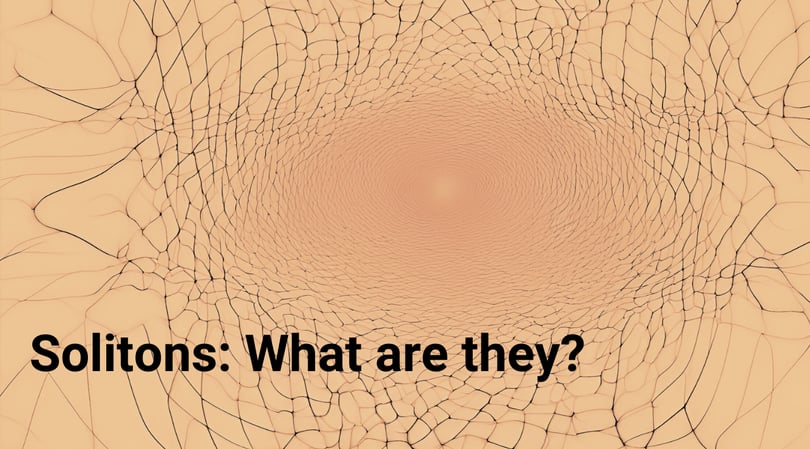Solitons: What are they?


Solitons are an intriguing and diverse group of phenomena that appear in various physical systems. They are stable localized solutions to the nonlinear wave equations, keeping their shape while moving at a constant speed. Here are some examples of solitons across different fields of physics.
1. Kinks and Antikinks: These are solitons that arise in field theories with discrete vacua. It is a soliton, which is a transition from one vacuum state to another, and it is commonly seen in 1+1 dimensions.
2. Vortices: In 2+1 dimensions, the vortices are solitons that may be visualised as localised whirlpools in fluid dynamics or as quantised flux lines in type II superconductors.
3. Magnetic Monopoles: These are theoretically hypothetical particles that are actually solitons in 3+1 dimensions, as proposed by some grand unified theories. A net "magnetic charge" would be borne by them, and they had been searched through various experiments
4. Instantons. Those are solitons in the 4 dimension, and quite importantly in QFT. Euclidean field equation solutions, which give rise to tunnelling of different vacuum states, are represented by instantons.
5. Sphalerons: Also in 3+1 dimensions, sphalerons are related to transitions violating the conservation of baryon and lepton numbers in some high-energy processes.
6. Tidal Bores: In fluid dynamics, a tidal bore is a soliton that appears in a river or narrow bay when the tide flows strongly upstream, creating a wave front travelling against the current.
7. Pulse Solitons in Optical Fibers: These are solitons in the form of light pulses that preserve their shape over long distances due to a balance between dispersion and nonlinearity in the fiber.
8. Ion Acoustic Waves in Plasmas: These are solitons in the form of sound waves that travel through plasma without losing their shape because the medium is nonlinear.
9. Domain Walls: Domain walls are solitons that separate regions of different magnetic or ferroelectric domains within a material in condensed matter physics.
10. Dislocations in Crystals: These are solitons that represent a break in the regular pattern of a crystal lattice, allowing the crystal to deform under stress.
These examples demonstrate the prevalence and diversity of solitons in nature. They have played critical roles in their areas of study—from explaining elementary particles in high-energy physics to facilitating reliable communication over optical fibres. The subject of solitons remains very active, with new discoveries and applications appearing continually. Solitons exemplify the beauty of nonlinear dynamics and the crucial role that they play in shaping the physical world.
